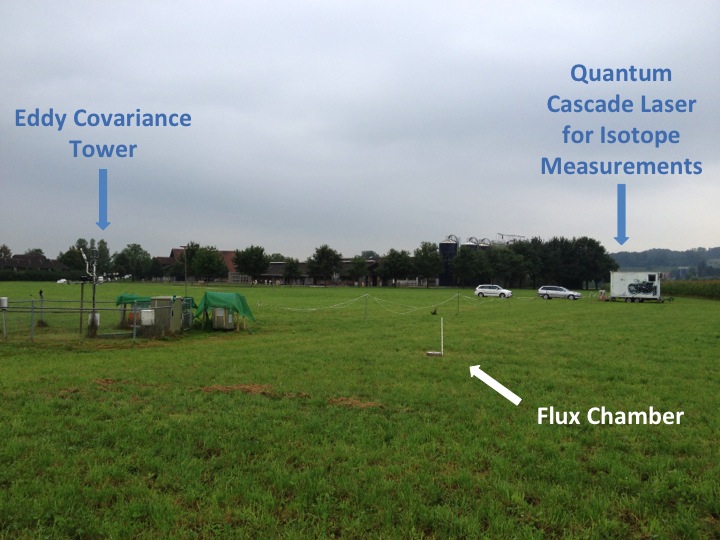Characterizing spatio-temporal variability and sources of nitrous oxide from a Swiss Grassland
Background
- Nitrous oxide (N2O) is a potent greenhouse gas and ozone depleting substance, and environmental protection urges to diminish emissions of this gas.
- Emissions from agricultural soils, including grasslands and croplands, were identified as the major human-induced source of N2O.
- In order to accurately quantify, monitor, predict and mitigate N2O emissions, a thorough understanding of the mechanisms underlying such emissions is essential.
- While a lot is known about processes that can contribute to N2O emissions and their controls under laboratory conditions, little is known about how much each of those processes contribute to N2O emissions at the field scale, how this varies in space and time, and how the contribution of different source processes is affected by environmental conditions.
- This is mainly caused by methodological limitations of measuring the different source processes in situ.
Project Objectives
- This project aims to better understand and capture spatial and temporal variability in N2O emissions from grasslands and its underlying sources in situ at high temporal resolution.
- The project integrates a suite of different experimental approaches, including conventional flux chamber methods, micrometeorological approaches, and high resolution measurements of N2O isotopes using newly developed quantum cascade laser spectroscopy.
- Results from this project will advance both methodological boundaries as well as improve our mechanistic understanding of N2O emissions from soil.
For further information please contact Johan Six ()

